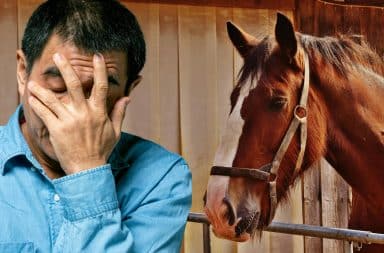There are many reasons you may be seeking to discover the timeless thrill of jazz music. Maybe you befriended somebody who wears a cabbie hat and you sense talk of “Bird,” “Dizz,” and “the West Coast scene” looming. Maybe you recently hung a Jackson Pollock print over your couch and with the right musical accompaniment you’ll be able to start calling your living room “the foyer.” Maybe you just turned thirty-five.
No matter the motivation, you are not alone. Behind exercising, eating more vegetables, and finishing Infinite Jest, listening to jazz has been cited in a recent Nielsen poll as the fourth most popular aspiration of Americans residing in major cities.
And it’s no wonder. Jazz is a brilliant genre, heralded as America’s only original musical art form, apart from bluegrass, country, country Western, folk, and folk revival.
The amateur enthusiast making a first foray into jazz may spring for the Dinner Jazz playlist on Spotify. This is a mistake. Despite its alluringly accessible Beatles covers, this playlist is the musical equivalent of Carl’s Jr. and box wine. In fact, it is recommended that you swear off any digital streaming if you are following the path of the true jazzer.
Instead, make an investment in a turntable and proper high fidelity sound equipment. For the purposes of this guide, we won’t delve into the nuances of audio hardware, but if the sales clerk mentions something about a tube amp and uses the phrase “they don’t make them like this anymore,” you’ve probably found the right stuff. As for the vinyl, you’ll only need one record to start. We recommend any obscure jazz group without a Wikipedia page. Something from an unexpected country is recommended.
One evening, while you’re playing the record of Senegal 60s bossa band at a dinner party (“the drummer uses the lid of an oil drum as a cymbal”), somebody, maybe an in-law or acquaintance you never really talked to before, will out themselves as a fellow jazzer and suggest that the two of you take in this great art “the way it was meant to be heard.” They are referring to a live performance, the pinnacle of the jazz experience. Check the schedule of your downtown theater and set a date.
On the night of the performance, it may be hard to get off the couch. You may consider shirking off with a text about how you weren’t able to get a sitter, or there is a slab leak in your kitchen, or you have a weird migraine that you describe with irrefutable detail (only on the left side, pulsing, sort of intermittent).
These are normal jazz performance jitters. Keep forging ahead.
By the time you meet your jazz friend and line up at the box office, you should be ready with trivia about the artist you are seeing. Forego the obvious (dates of birth, who they played with, the city they grew up in). Focus on anecdotes your jazz friend won’t know. Stories of narcissistic rage work great (“He was on a cocaine binge and hit Freddie Hubbard across the head with his sax. Boss.”). With this jazz banter established, it’s time to take your seat.
When the performance starts, the first thing you’ll realize is that jazz, unlike most genres of music, is all about improvised solos. Jazz is different every night, which will keep you from getting too comfortable and singing along. In the typical jazz performance, the solos might go as follows:
Horn solo
Somewhere in the middle of this solo, a horn player may throw in, say, four seconds of the Looney Tunes theme. You’ve encountered your first jazz joke. This is a special kind of humor, where the musicians on stage play something that you recognize, but didn’t expect. It is customary to chuckle just loud enough for all attendees in a three-seat radius to know a true jazz fan is in range.
Piano Solo
At this point, your mind may start to wander:
I wonder if they’re really feeling it or they’re just going through the motions.
How much money do musicians make?
I should start wearing my retainer again.
To keep your mind on the music, this is a great time to whisper something to your jazz friend. “Beautiful” if it’s a ballad. “Wow” if it’s fast-paced bop. The first few lines of Beat poet Allen Ginsberg’s Howl for anything heavier.
Upright Bass Solo
It is tradition that everybody gets a solo in jazz, even the quietest instruments on stage. The bass solo will not be heard by most of the audience. You will have to infer the sounds by the bassist’s facial expression: the raised eyebrows with rising octaves or the caveman scowl for the low, woolly notes.
Drum Solo
If you are a fan of popular music, you may have some idea of what comprises a drum solo–the intro to Hawaii Five-O, perhaps. However, a jazz drum solo is distinguished by being so rhythmically complex as to prevent foot tapping, or any continued sense of rhythm by the average listener at all. However, it is important not to show confusion. Refer to the drum solo as “syncopated” or “polyrhythmic.”
After the performance, you will be expected to discuss with your jazz friend what you just saw. If you are tongue-tied for musical terminology, you can always fall back on an adjective like “resplendent” or “spellbinding.” Just make sure to remember the names of the instruments. Calling a saxophone a flute at this stage could be costly to your budding reputation.
Congratulations! You have taken your first steps towards becoming a bona fide jazz fan. We hope that you continue to enjoy your journey and explore the delight of being known as somebody who knows a lot about jazz.
After closing the jazz banter on something about how “the notes between the notes,” bid adieu to your jazz friend. Get back in your car, sit back, turn on your radio, and put on the music you normally listen to. You’ve earned it.


